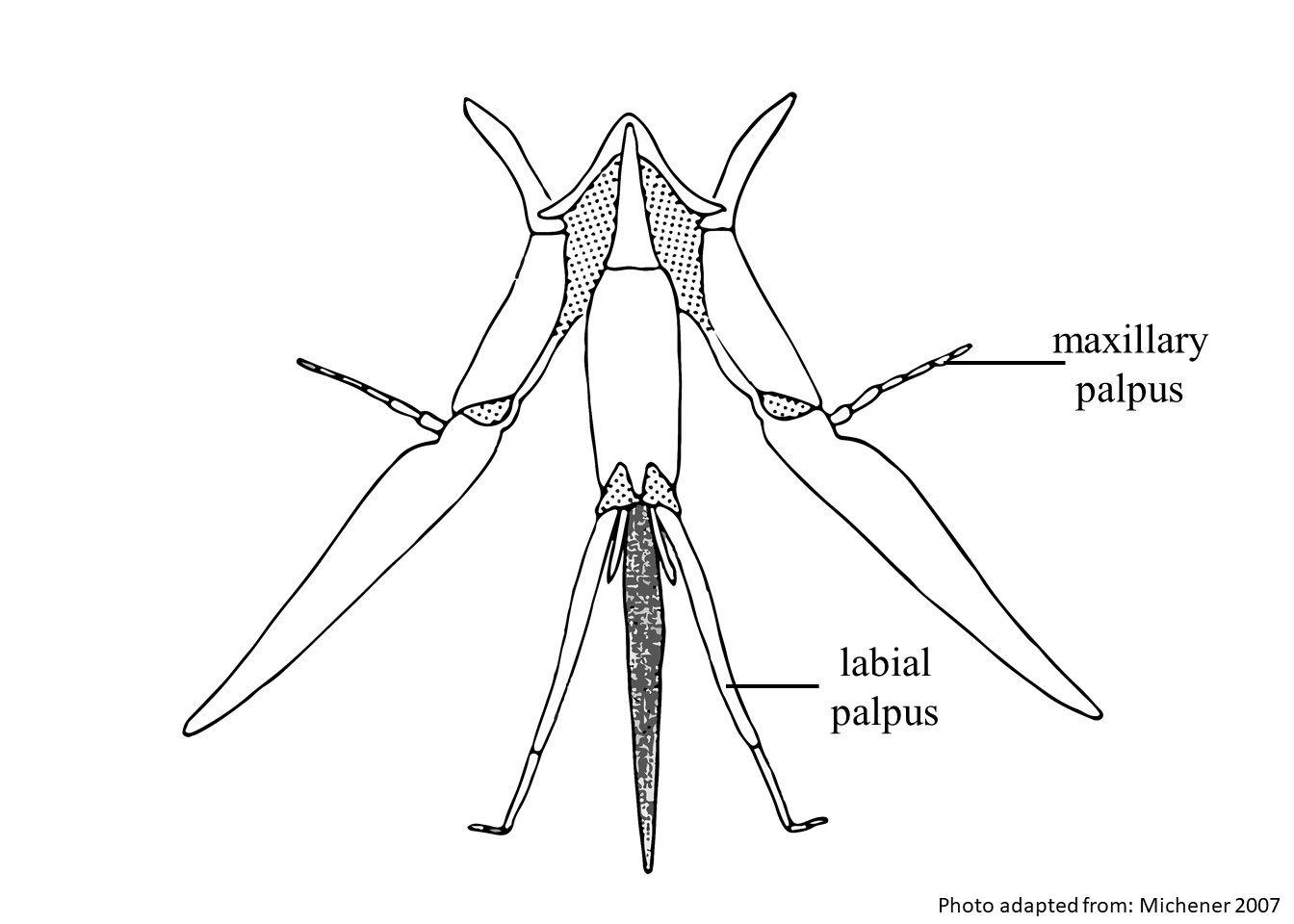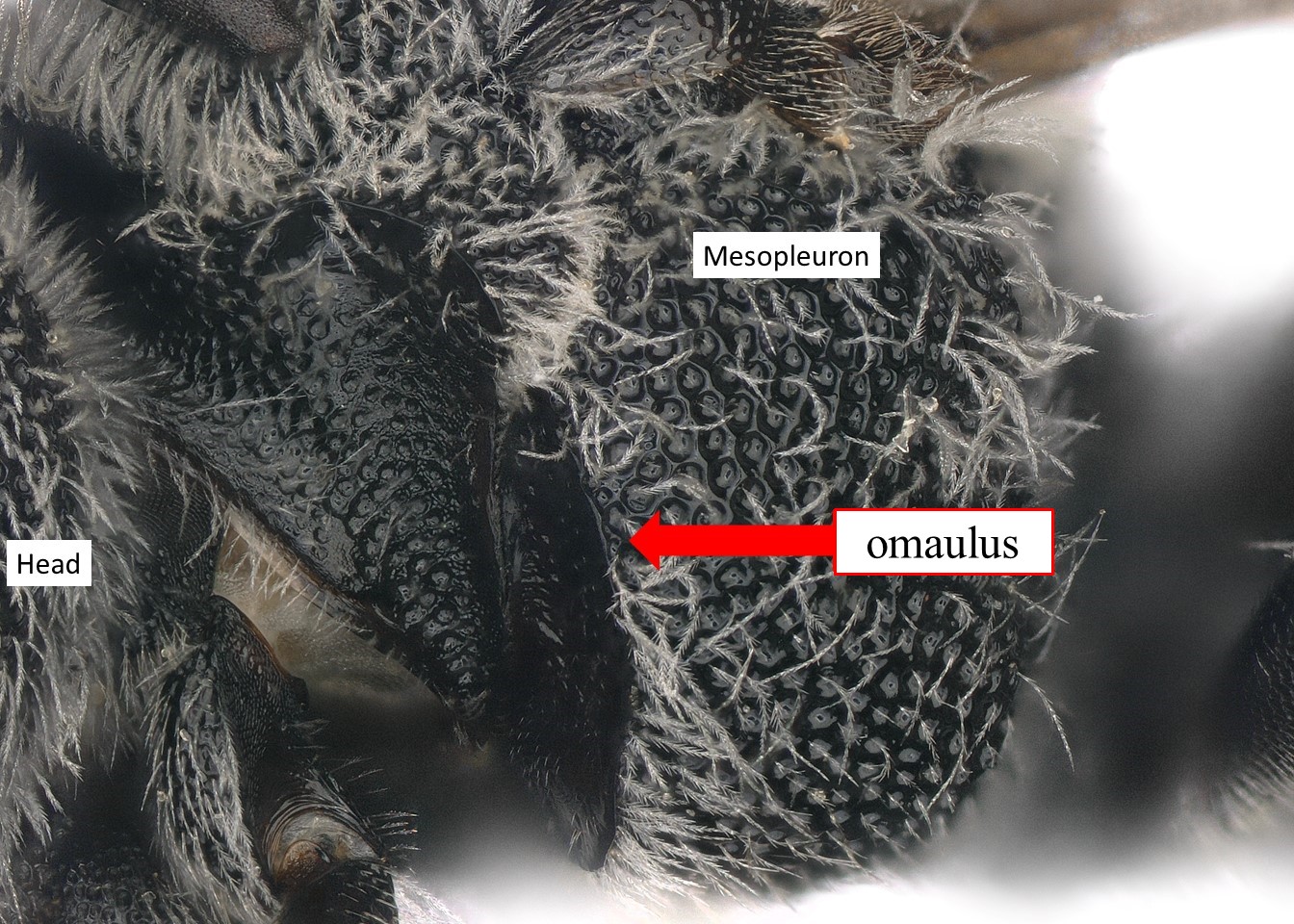Family: Megachilidae
Subfamily: Megachilinae
Tribe: Osmiini
Genus: Afroheriades Peters, 1970
Subgenera: none
Common name: none
Afroheriades are small black, coarsely punctatepunctate:
studded with tiny holes
bees that range in body length from 4–8.5 mm. Two species groups are present in Afroheriades: the Afroheriades primus species group and the A. larvatus species group. Species in the former have a robust body form, whereas those of the second group have slender and elongate bodies (Michener 2007Michener 2007:
Michener, C.D. 2007. The Bees of the World (2nd ed.). Johns Hopkins University Press, Baltimore and London, 953 pp.).
Afroheriades have 5 described species and at least 3 undescribed species worldwide (Griswold and Gonzalez 2011Griswold and Gonzalez 2011:
Griswold, T. and V.H. Gonzalez. 2011. New species of the Eastern Hemisphere genera Afroheriades and Noteriades (Hymenoptera, Megachilidae), with keys to species of the former. Zookeys 159: 65ndash;80.; Michener 2007Michener 2007:
Michener, C.D. 2007. The Bees of the World (2nd ed.). Johns Hopkins University Press, Baltimore and London, 953 pp.); none are known to occur in the U.S. or Canada.
(modified from Michener 2007Michener 2007:
Michener, C.D. 2007. The Bees of the World (2nd ed.). Johns Hopkins University Press, Baltimore and London, 953 pp. unless otherwise stated)
 two segmented.
two segmented. rounded. (Griswold and Gonzalez 2011Griswold and Gonzalez 2011:
rounded. (Griswold and Gonzalez 2011Griswold and Gonzalez 2011: with translucent apicalapical:
with translucent apicalapical: .
. without a brush of hair under margin.
without a brush of hair under margin. without median apicalapical:
without median apicalapical: broadly emarginateemarginate:
broadly emarginateemarginate: .
. quadrate.
quadrate.Afroheriades is most similar to Pseudoheriades; however, they differ in that Afroheriades has a rounded pronotal lobepronotal lobe:
a part of the pronotum located dorsally on the posterior margin of the pronotum and overlaps the anterior thoracic spiracle and omaulusomaulus:
angle between anterior and lateral surfaces of mesepisternum
 , and the males lack a mid-apical spine on S3S3:
, and the males lack a mid-apical spine on S3S3:
the plates on the underside of the abdomen, often abbreviated when referring to a specific segment to S1, S2, S3, S4, S5, S6, S7, or S8
 (Griswold and Gonzalez 2011Griswold and Gonzalez 2011:
(Griswold and Gonzalez 2011Griswold and Gonzalez 2011:
Griswold, T. and V.H. Gonzalez. 2011. New species of the Eastern Hemisphere genera Afroheriades and Noteriades (Hymenoptera, Megachilidae), with keys to species of the former. Zookeys 159: 65ndash;80.). Afroheriades can be separated from all other Osmiini by the combination of characters above.
There are no known invasives.
Afroheriades are only known from South Africa (Michener 2007Michener 2007:
Michener, C.D. 2007. The Bees of the World (2nd ed.). Johns Hopkins University Press, Baltimore and London, 953 pp.).
Distribution map generated by Discover Life -- click on map for details, credits, and terms of use.
Griswold, T. and V.H. Gonzalez. 2011. New species of the Eastern Hemisphere genera Afroheriades and Noteriades (Hymenoptera, Megachilidae), with keys to species of the former. Zookeys 159: 65-80.
Michener, C.D. 2007. The Bees of the World (2nd ed.). Johns Hopkins University Press, Baltimore and London, 953 pp.